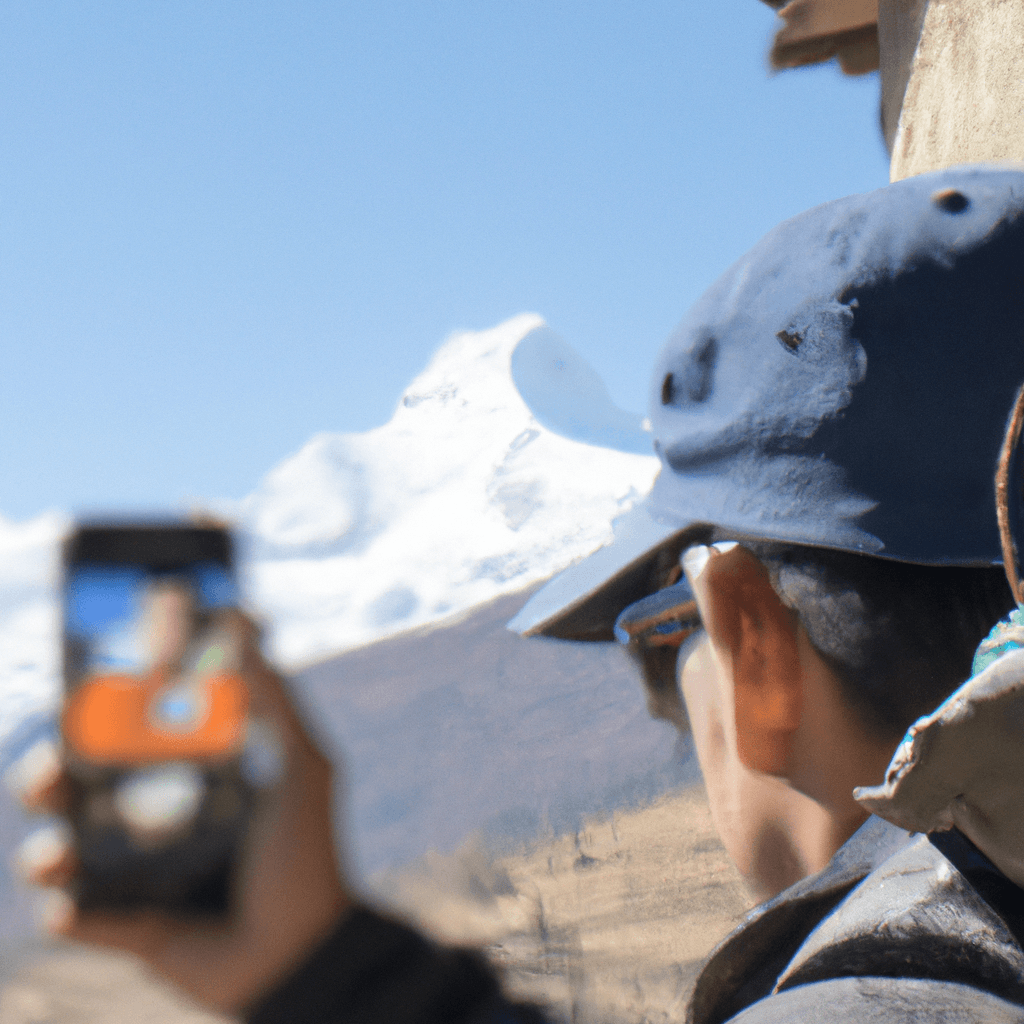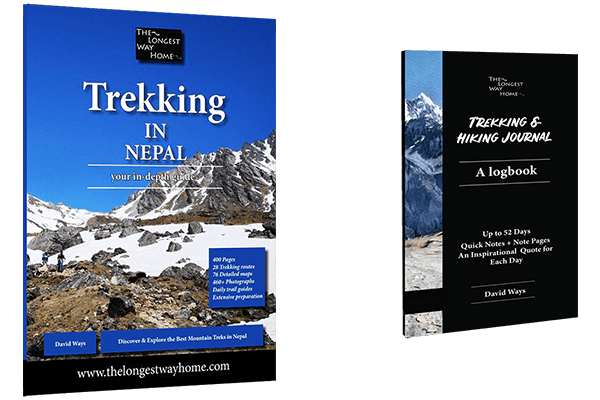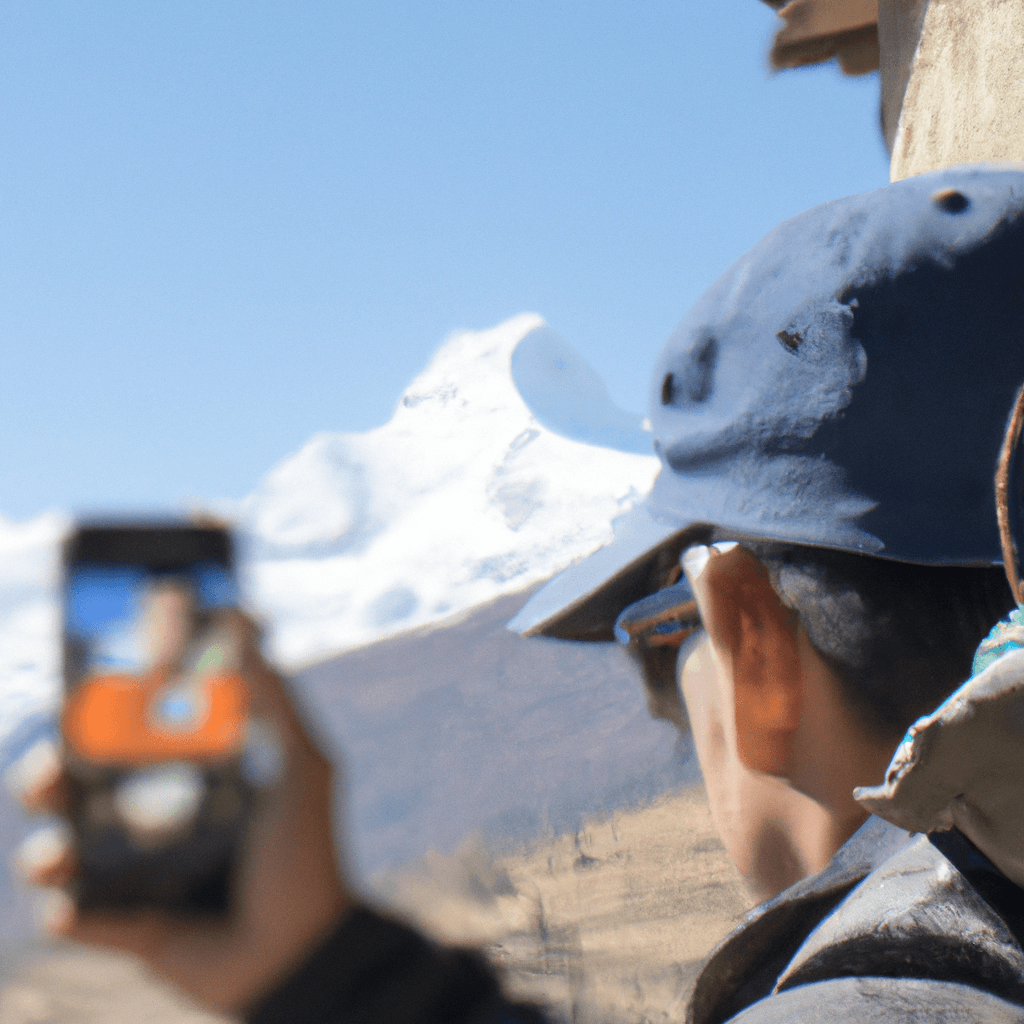

Good trekking guides are in short supply, and it’s not getting better
Times are changing in Nepal and the trekking industry is no exception. The pandemic flattened Nepal’s tourism industry. With no trekkers what were trekking guides meant to do? The same as many in other services industries did around the world – they got different jobs, lost homes, moved on.
While everything looks shiny and nice on travel brochures, trekking websites, and even on the ground. The reality is there’s a deficit of trekking guides in Nepal at the moment. More to the point, there’s a severe lack of good trekking guides out there at the moment. And trekkers are already experiencing problems.

Over the past couple of years there’s been an increase in trekking accidents, rogue guides, missing trekkers, and deaths. While I’ve written a guide about how to hire a trekking guide in Nepal that includes this information, we’ll go more in-depth here on recent developments.
Nepal’s trekking industry is not well regulated
If you’ve read my recent article on the desperate need for a new Trekking Information Management System in Nepal you’ll know how bad things are regulated. Trekkers are being charged for TIMS cards where they don’t need any. TIMS card checkpoints are unmanned. And TAAN (the body who regulates them) literally shrugs its shoulders. Meanwhile famous trekking regions like Solukhumbu (Everest) have broken away, and are now issuing their own permits.
Trekking Guide training is random and money talks. The training materials are outdated (still no CPR training), and follow-up training is simply non-existent. And yes, that’s TAAN again. Meanwhile trekking companies themselves push hard for solo trekking to be banned so every trekker has to hire a guide. They sometimes list this as a safety measure, but the numbers don’t add up with a near equal number of trekkers dying or going missing with guides than without. Quite frankly, no tourists should die when they are with a guide … but they do. And, for all the wrong reasons – safety.

At the end of the day, it’s all about making money in Nepal these days. And this has resulted in a trekking industry filled with profiteers where once you had genuine people who earned their living by showing people through the mountains over two peak seasons during the year. There’s no sign of things improving either. So the only thing to do, is be doubly prepared when preparing for a trek in Nepal.
Last minute rushes to hire trekking guides are increasing (which is bad)
One might put this down to a fast paced world. Online ease at home. Or, the assumption that Nepal must be well regulated. In either case the number of tourists leaving the process of hiring a guide until the last minute or the last couple of weeks before touching down in Nepal has been steadily increasing. Keep in mind, so have accidents, missing reports, and deaths. The two are related.
Good well experienced guides either work for a trekking company exclusively, or are hired out by other trekking companies if they get a better deal. These deals usually occur months before a trek starts by people who book well in advance. These are usually high-end trekking groups, starting with helicopter rides, plush tents, or exclusively booked hotels. Next come the repeat trekkers or those with good knowledge to book good guides. You get the picture.
It means leaving it to a couple of days or weeks before you arrive to hire a guide means you are looking at a gamble that a good guide is available in between their other bookings, or you are looking at the bottom of the pack trekking guides who nobody has yet hired. Keep in mind, many guides have left the industry and there is a shortage of trekking guides. You really are pushing your luck by leaving it to the last minute.

Times are changing, so can you
As I write in my guide on how to hire a trekking guide in Nepal, and in my Trekking in Nepal guidebook, gone are the days of needing to be in Kathmandu to meet your guide. This was a thing 20 years ago which is still upheld in some old guidebooks and online forums, you need to meet your guide in Kathmandu. Those days are long gone. Nowadays most trekking guides and certainly trekking companies have smartphones. The electricity and the internet became stable back in 2016.

These days for any guide I recommend through my Find a Trekking Guide service I highly recommend trekkers to talk with them via WhatsApp, Skype, or Messenger long before they arrive in Kathmandu! It’s a great comfort to meet the person you’ll be spending a couple of weeks with before you arrive. You can start to build a rapport with them. You can start to understand their accent. You can also find out how genuine they are by asking about what they do, who are their families, where they live etc. You can ask questions, get a feel for the person, and build as much of a relationship (or not) as you want.
You probably shouldn’t hire a trekking guide from your hotel
Many last minute trekkers who leave it until they arrive in Nepal to hire a guide are charmed by their hotel receptionist or manager. It’s this Nepali welcoming good nature that woos people into liking the country so much. It’s also how many people earn extra money. By having conversations like:
Hotel: Are you here for trekking?
Trekker: Yes
Hotel: What trek?

Trekker: Everest
Hotel: Do have a guide already?
Trekker: No, we are going to go and find one tomorrow
Hotel: Oh really? My brother is a guide from Everest and is ready now if you’d like to meet him
Hook, line, and sinker.
More cut throat hotels will even interject if you have a guide or trekking company.
Trekker: Yes we have trekking guide
Hotel: That’s great. May I ask what company?
Trekker: I think it’s ABC Trekking Company.
Hotel: Oh, really (surprised look). That’s too bad.
Trekker: What do you mean?
Hotel: Oh, nothing really. They just had some problems last time.
Either that or they will flat out ask what price you are paying and knock a few dollars off to try and grab you. The conversation then rotates around to the hotel offering someone better and cheaper.
It’s an age old “scam”. Don’t fall for it. Hotels in Nepal all know each other and most have deals with many different trekking companies. However they lure travelers in by saying things like their brother is a guide. However, the term “brother” doesn’t mean actual brother. It means fellow countryman or friend or accomplice. The hotel receptionist will simply call the manager, who will call their latest friend from a trekking company to see who can send around a guide the fastest in exchange for some extra cash. There’s no vetting or care about who you are really getting.
The same goes for hotels with little areas sectioned off offering treks. They still hire from someone one else, and it’s usually the next available guide who can run down to the hotel. It’s all business these days I’m afraid.
You definitely don’t want a street trekking guide these days
Many people still seem to be using guidebooks that are woefully out of date that once said you can easily pick up a guide on the streets of Kathmandu. And you still can. Or rather the street guide will be trying to pick you up! These days, things have changed. With insurance scams, the internet and social media guides are well aware of how to make cash. All trekking guides need to be registered with an agency before going on a trek. So that street guide telling you they work for themselves is only telling a half-truth.
Guides who are not permanent employees of a trekking agency. Trekking agencies are covered by their own trekking guide insurance these days as TAAN have failed to cover guides and porters with insurance outside the Annapurna region. It means a guide has to register through a trekking company otherwise they don’t have insurance. If they don’t have insurance and you hire them, then they can have an “accident” in the mountain and you will be their legal employer and not the trekking agency – meaning you will have to pay for their medical bills.

Moreover, street guides have no legitimate references. Over the past couple of years the lack of genuine experienced guides has seen a rise of trekking guides “trying their luck”. This has led to terrible events in the mountains. Lost groups, stranded trekkers, abandoned trekkers, plenty of altitude sickness, insurance claims due to “stomach upsets” – the bicarbonate of soda trick, and unfortunately deaths. While unexpected bad weather contributed to one incident last year the fact remained that these street guides continued on in bad weather putting money over safety. It led to two trekkers dying and many more being stranded in snow overnight. Moral of the story? Don’t hire street guides anymore.
Should you just go trekking without a guide?
No! If you have never been trekking in Nepal before, you should definitely get a guide for your first trek. After that, you can make up your own mind. I’ve seen an increase of first time trekkers asking online about how to do “xyz” trek alone? Some say they’ll rely on MapsMe. Others say they’ll meet up with others. All these ideas are insanely bad.

A prime example is Annapurna Base Camp. A relatively easy trek. However, every March for the past 5 years it has snowed along the route. Avalanches have occured. the trail has been completely blocked. And yes, people have died. Yet online the vast majority of people re saying “yes, yes, go on ABC!”. This is a mix of people and guides. The trekkers may have done it at a different time of year, or simply had good luck. Meanwhile, the guides are doing their usual tricks of trying to strike up a friendship and luring people in to book with them, or their hotel, or shop etc.
In my 20 year experience, for first time trekkers you should be getting a good guide for your trek. Relying on a phone map is just nuts. Cold weather (batteries), accidents etc and you’ve just lost your map. The trails are not well maintained in Nepal. There really are few trail signs these days. Yet still people trying to “save money” justify not taking a guide the first time and they end up in lethal trouble up in the mountains. The answer is to research your trek with time honored material like up to date trekking books, and not rely on internet forums, YouTube videos, or Facebook groups. Better yet, hire a professional trekking guide in Nepal because they will also be your teacher. It’s common sense really, but people still make these mistakes.
The future for guides and trekkers?
Nepali regulations have failed miserably. Don’t believe hearsay online. The amount of guides and trekking companies masquerading as trekkers on forums and websites to try and get your business is everywhere. Do not rely on them. Research thoroughly before trekking and you will be fine. Yes, it takes work. But doing so yourself will mean you’ll know what to expect instead of being disappointed.

Check out the latest trekking permit fees as they’ve changed again this year with TIMS cards no longer being needed in Solukhumbu . And, new TREK CARDS are being issued for the region for solo trekkers. Meanwhile it might interest some that TIMS card checkpoints are still closed all over the Annapurnas. Keep in mind that many treks will need different permits, they are not all the same. So read up on each trek independently.
Finally helicopter rescue scams are still prevalent. The worst of the worst are still cashing in on trekkers travel insurance – and yes some trekkers do it too. It’s caused a huge increase in travel insurance costs. Wise trekkers should also double down on going with a reputable trekking company to avoid cheap trek offers which inevitably end up with one person getting “sick” and the guide coming to the “rescue” by calling their travel insurance company to get a helicopter recuse (basically they make huge commissions from the helicopter companies and hospitals.
Where to get the best and most up to date information?
Help is on hand here as it has been for over 15+ years now. Each trek in my Nepal trekking guides section on the side bar is up to date. Likewise if you want a summary to narrow things down use my list of treks in Nepal page to help. Otherwise there’s a great list treks to read about with all the permit fees, where to get them, what you need, and even day by day accounts on offer.

In my Nepal guidebook the lists are even easier to read for the top treks in the country. While in my dedicated Trekking in Nepal Guidebook you’ll have over 28 to choose from with quick references to show you how long each one takes, and how hard they are, along with weather charts, difficulty charts, recommended trekking agencies, where to buy trekking equipment and more more.
You should also check out Missing Trekkers in Nepal to see history of current and missing trekkers along with trekking alerts. Finally you can also read my guide on how to find a trekking guide in Nepal. And, if you want all of the above done for you, then there’s my Find A Nepal Trekking Guide Service.
Get my Trekking in Nepal Guidebook & discover more than anyone else!
Looking for more insider tips and information like this? Get the most up-to-date, popular and dedicated guidebook to Trekking in Nepal in the world. Covering 28 full treks over 400 pages. The only trekking guidebook in the world with trekking links showing you how to link treks together! Available as an instant download or worldwide shipping for the paperback edition!
Take a look below and you’ll find out why this beats all other guidebooks!

